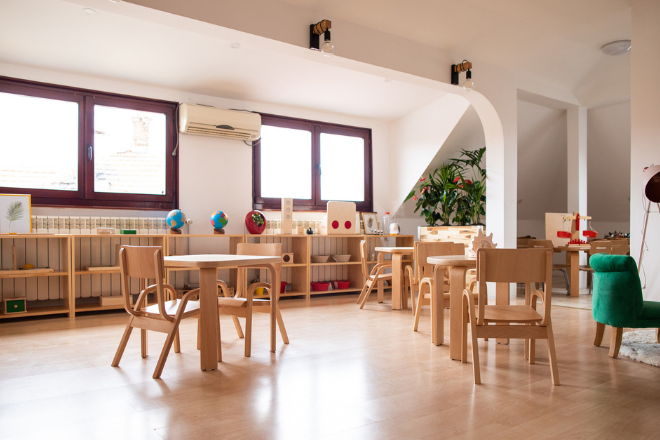Article by Kevin Folsom, Building Solutions
Ventilation in older buildings has long been a problem, but with the ongoing threat of COVID-19 and the Delta variant, it has moved to the front burner. Unfortunately, many schools are finding that they have inadequate ventilation, marked by insufficient levels of outside air. Recent codes require increased amounts of outside air in education spaces, but with the exception of the newest buildings, school spaces are typically performing below current standards. Buildings that were built under old codes may be legally tolerated, but they are unhealthy, especially in pandemic conditions.
During the pandemic, the American Society of Heating, Refrigerating and Air-Conditioning Engineers (ASHRAE) became a household name, in part for their resource, the ASHRAE 62.1 (2019): Ventilation for Acceptable Indoor Air Quality. First published in 1973, the latest version is considered the industry standard for introducing fresh air into buildings. Cities have adopted this standard in their mechanical codes for large facilities with very high occupancy loads ever since it was first published. Only in the last decade, however, has it been required for smaller residential type units in education facilities.
We at Building Solutions have used this standard to guide an achievable approach to healthy indoor air. Schools now place a premium on health, even at some cost of comfort and efficiency when necessary, to meet changing public health scenarios. We are finding that most schools want to move toward the highest standards of healthy indoor air, even if it must be performed incrementally. They also need to demonstrate to their constituents that they are taking positive action, based on science and engineering, with minimal investment in “theatrical” gestures or expensive gadgets. If they must invest in visible appliances or equipment that demonstrate they are taking “action,” they want those solutions to be effective.
Common School Problems
Achieving this balance of health, comfort, and economy is sometimes at odds with the “easy” solutions that often involve exotic technologies. Some are appropriate under the right circumstances, while others not so much. While we are sensitive to schools’ different needs and choices, our recommendation is to begin with the existing, built-in HVAC systems currently in school facilities. Ensuring HVAC systems are compliant with current codes and ASHRAE 62.1 (2019) is the best starting point for aerosol infectious disease prevention as well as the promotion of several other health benefits.
Most small to medium sized education facilities have roof top package units (RTUs). These are required to have exterior fresh air dampers built into them that are fixed in place at the percentage required by law (62.1) for mixing fresh air into the ventilated space. However, these small to medium size facilities also supplement their RTUs with residential-type split systems that do not have the fresh air dampers built in. Some split systems may have been added after the building was constructed or remodeled when building inspections were not involved. As a result, the building has fallen behind code compliance with the mechanical code for education facilities.
Inefficient units often lead to comfort complaints, sometimes leading maintenance or contractor technicians to close the fresh air dampers to resolve the complaint because they’re not sure where the problem is, when everything else with the unit seems to be operating as designed
A complication associated with 62.1 is that it requires special sizing of the HVAC unit so it can properly treat the unconditioned outside air. In many climates, outside air is humid and making it comfortable requires increased air conditioning capacity to dehumidify it. Larger facilities have special controls to monitor people loads, so the units can automatically modulate the outside damper controlling when an adjustable amount of fresh air is needed in a particular space. In those facilities, outside air is minimized if there are fewer occupants in the space. All HVAC systems in these buildings are designed to work as one system, building-wide and symbiotically, to meet the ASHRAE Standard.
Most RTUs do not have special controls and the residential split system units are almost never sized properly to add outside air ducting or have the controls to manage it. As a result, it’s unclear when exactly the system is working. Inefficient units often lead to comfort complaints, sometimes leading maintenance or contractor technicians to close the fresh air dampers to resolve the complaint because they’re not sure where the problem is, when everything else with the unit seems to be operating as designed. Sometimes a maintenance issue requires temporary closure of the damper until resolved, then the technician forgets to open it back up to the proper setting — preventing the unit from providing the required fresh air. After all, if the outside air system is not functioning, no one will know and it uses more electricity. So it has not been a priority to anyone until now.
Guidance
If independent schools are not ASHRAE 62.1 compliant, catching up could potentially be expensive. Recognizing this, we suggest schools approach the effort in three phases, making the process affordable and without undue sacrifice of comfort and economy.
ASHRAE 62.1 has a prescribed maintenance schedule, which is broken down into various tasks and starts over every five years. The most reliable verification of appropriate maintenance is a visual inspection by a third-party consulting engineer, who is not affiliated with the maintenance company. This inspection should take place at minimum every five years. One of the important criteria in the standard is “air changes” for the purpose of virus dilution with outside air and filtration of air entering or recycled into the space. The number of air changes is determined by room size and the proposed type of use(s) (e.g., classroom, auditorium, gym, etc.). The size of the HVAC system is determined by how many times all the air inside a room needs to be treated by the HVAC system.
The good news is, it’s not guesswork; the feasibility of upgrading filters in your system can be determined by a qualified engineer.
So what should schools make of higher-grade filters, like Merv 13s? In less sophisticated systems, these much more air restricted filters will cause a pressure drop in the ducts, resulting in less air flow and fewer air changes. In addition, the air flow restriction will put a strain on the HVAC system, increase electricity cost, and shorten the lifecycle of the unit. Thus, these filters may do more harm than good. The good news is, it’s not guesswork; the feasibility of upgrading filters in your system can be determined by a qualified engineer.
In the meantime, we recommend that schools not install filters higher than Merv 10 in small air handlers (that is, handlers that are not the whole building type centralized air handlers) until you have had the assessment engineer determine what is overall best for each unit. You do not want to limit the amount of outside air changes for higher air filtration.



